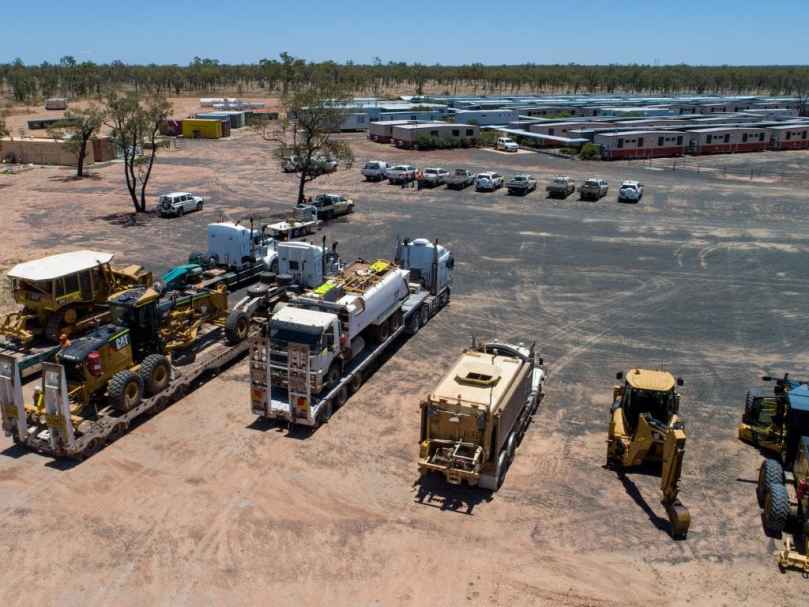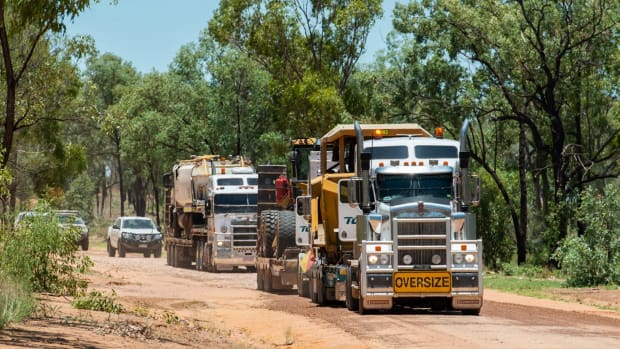Throughout the long struggle over Adani’s Carmichael mine, I’ve argued that the project, as well as being environmentally disastrous, is not financially viable. Adani’s objective has been to keep the project alive, both to avoid bringing the loss of money already spent on the project and to maximize the chance that an Australian government will either pay them to go away or stop the project in a way that leaves open the possibility of a claim under the insidious system of Investor State Dispute Settlement, which still applies between Australia and India, even though our trade agreement has lapsed. On the other side, Labor governments would clearly like Adani to go away, but don’t want to be blamed for the loss of (largely imaginary) jobs, or to be sued under ISDS. Given
Topics:
John Quiggin considers the following as important: Uncategorized
This could be interesting, too:
tom writes The Ukraine war and Europe’s deepening march of folly
Stavros Mavroudeas writes CfP of Marxist Macroeconomic Modelling workgroup – 18th WAPE Forum, Istanbul August 6-8, 2025
Lars Pålsson Syll writes The pretence-of-knowledge syndrome
Dean Baker writes Crypto and Donald Trump’s strategic baseball card reserve
Throughout the long struggle over Adani’s Carmichael mine, I’ve argued that the project, as well as being environmentally disastrous, is not financially viable. Adani’s objective has been to keep the project alive, both to avoid bringing the loss of money already spent on the project and to maximize the chance that an Australian government will either pay them to go away or stop the project in a way that leaves open the possibility of a claim under the insidious system of Investor State Dispute Settlement, which still applies between Australia and India, even though our trade agreement has lapsed.
On the other side, Labor governments would clearly like Adani to go away, but don’t want to be blamed for the loss of (largely imaginary) jobs, or to be sued under ISDS. Given that there is apparently no financial institution in the world willing to finance this appalling project, that has seemed like a good bet.
Adani’s announcement in November that the project would be financed by $2billion its own resources was a clever move to undercut this hope. But of course Adani doesn’t want to spend such a massive sum, any more than it spent the $400 million supposedly released for preconstruction works in 2017. So, having announced a start on construction “before Christmas”, the company did nothing. Its jobs portal, set up with great fanfare in 2017, has so far listed only four or five Adani jobs (though other employers use it quite a bit).
The self-funding announcement stirred the pot for a while, but something more was needed. So, Adani announced that it was moving heavy earthmoving equipment to the site, ready for an immediate start. It released a couple of pictures, which are below.


I’m not an expert, but it seems to me that these pictures show only one, or maybe two, vehicles that could be described as “heavy earthmoving equipment”. And while the camp (which was apparently constructed in 2016) has accommodation for 300 workers (rather less than the 10 000 we were promised), the collection of vehicles parked out the front suggests that actual occupancy is more like 20.
Just as with Prince Potemkin’s famous villages, moved from place to place along the Dnieper to give Catherine the Great an impression of bustling activity, there’s every chance that this arrangement is just for show,
Meanwhile, the Queensland Labor government has responded in kind. Whereas Adani suggested that its radically revised proposal was still covered by previous approvals, the government is sending them back to the drawing board on a range of issues.
As far as Labor is concerned, the big questions will arise when (I assume) they win federal government in May. An obvious requirement for good policy is the repudiation of all ISDS clauses in trade agreements, to preclude the possibility of an Adani lawsuit. Then we need a coherent policy on phasing out coal exports.
In the meantime, my guess is that we will see a fair bit more shadow boxing.
